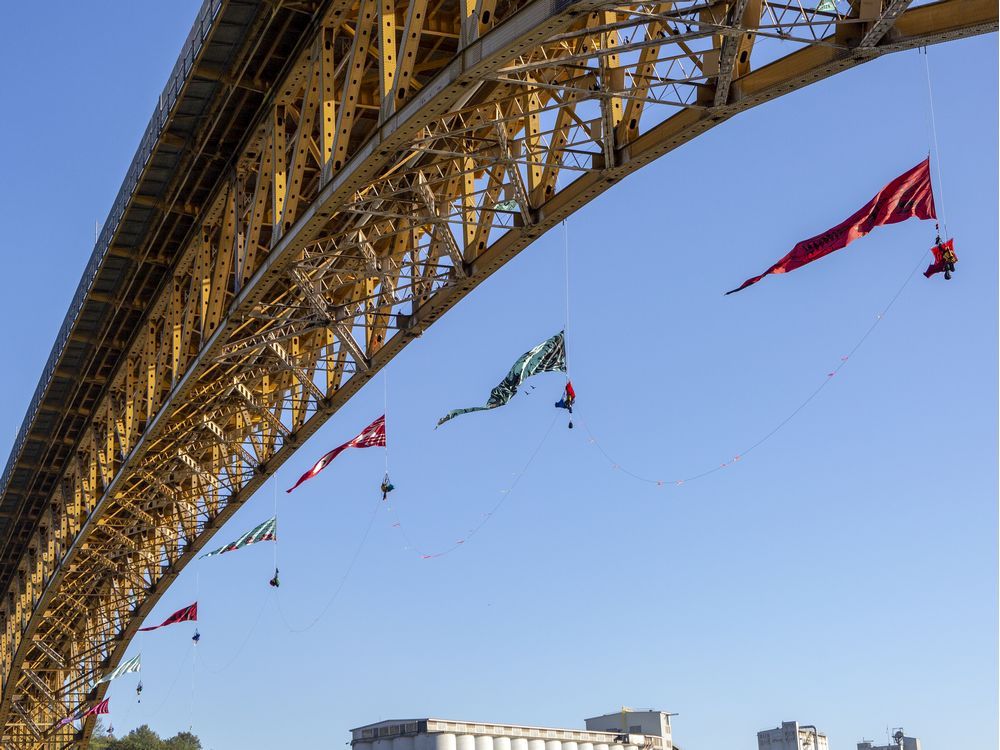Art exhibition highlights Indigenous Acts of Resistance

Credit to Author: Denise Ryan| Date: Tue, 04 Feb 2020 23:36:23 +0000
On the day the Federal Court of Appeal dismissed applications challenging the Trans Mountain Pipeline expansion, Will George, a Tsleil-Waututh activist and artist, said he felt heartbroken. “It really shows that reconciliation for us is over. There is no such thing.”
On July 3, 2018, George was one of seven Indigenous activists to unfurl protest streamers from Vancouver’s Ironworkers Memorial Bridge as part of an “aerial blockade” of oil-tanker traffic. George rappelled off the side of the bridge and livestreamed the action before he was removed and arrested.
Resistance art has a long tradition in Indigenous communities. “Art, direct action and civil disobedience can help us relay the messages of what it feels like to have our First Nations rights be neglected and betrayed,” said George.
When George was arrested, the 40-foot-long streamers were confiscated by police, shoved into garbage bags and put into storage, where they languished for a year.
Will George, a Tsleil-Waututh grassroots leader, not only designed one of the featured banners, but also rappelled from the Second Narrows bridge as part of the seven-person aerial blockade to prevent an oil tanker from leaving.
The Museum of Vancouver procured and restored the banners and will display them at an exhibition entitled Acts of Resistance that opens Wednesday and runs through July. The exhibition features all seven of the streamers created for the aerial blockade by artists Brandon Gabriel, Will George, Ronnie Dean Harris, Ocean Hyland, Jackie Fawn Mendez, Marissa Nahanee, and Ed Archie Noisecat.
Sharon Fortney, the museum’s curator of Indigenous collections and engagement, had seen George livestreaming while he hung under the bridge, and was intrigued by the use of art in the protest.
“It struck me how they brought attention to the project in such a dramatic and beautiful way, and were able to make people think about the long-term effects and the risks of the Trans Mountain Pipeline expansion,” said Fortney.
What she didn’t count on was the challenge of restoring and preserving the banners that were crumpled and damaged.
“These were pieces made for action. They are art, but they weren’t made to last. They are acrylic paint on nylon, so the likelihood of them being preserved for longer than 10 years is low,” said Fortney.
“When I was arrested, one of the officers shook my hand and expressed his gratitude to us for what a great job we did,” George said. “Then, the day I went to get my personal banner back, it was in a garbage bag and the paint is cracked and damaged. It’s something First Nations are kind of used to with authorities and police.”
George said that despite continuing protests, not enough people understand the threat to the inlet.
The timing of the exhibition, coming just a day after the Federal Court decision, was simply synchronicity. George will be speaking at the opening.
“We need people in the Lower Mainland to see that we are here to protect what you love.”